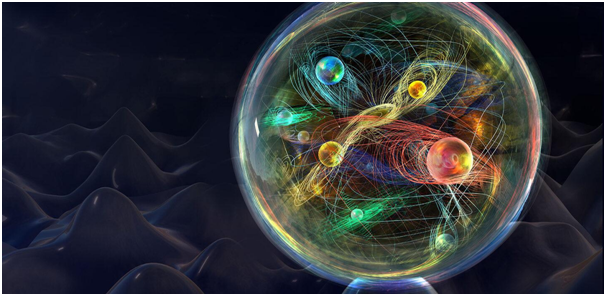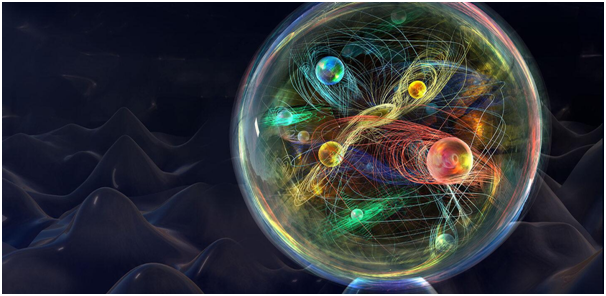Higgs Boson
Context: Recently, physicists working with the Large Hadron Collider (LHC) particle-smasher at CERN, in Europe, reported that they had detected a Higgs boson decaying into a Z boson particle and a photon. This is a very rare decay process that tells us important things about the Higgs boson as well as about our universe.
What is a Higgs boson?
- An electron is a subatomic particle that has mass. How does this mass arise? How can we say that an electron has less mass than a proton, or that a photon has no mass at all? The answer lies with the Higgs boson.
- The stronger a particle’s interaction with the Higgs boson, the more mass it has.
- This is why electrons have a certain mass, protons have more of it, and neutrons have just a little bit more than protons, and so on.
- A Higgs boson can also interact with another Higgs boson — this is how we know that its mass is greater than that of protons or neutrons.
- The Higgs boson is a type of boson, a force-carrying subatomic particle. It carries the force that a particle experiences when it moves through an energy field, called the Higgs field, that is believed to be present throughout the universe.
- For example, when an electron interacts with the Higgs field, the effects it experiences are said to be due to its interaction with Higgs bosons.
- Since all the matter in the universe is made of these particles, working out how strongly each type couples to Higgs bosons, together with understanding the properties of Higgs bosons themselves, can tell us a lot about the universe itself.
The results of the study
- According to quantum field theory, which is the theory physicists use to study these interactions, space at the subatomic level is not empty. It is filled with virtual particles, which are particles that quickly pop in and out of existence.
- They can’t be detected directly, but according to physicists their effects sometimes linger.
- The LHC creates a Higgs boson by accelerating billions of highly energetic protons into a head-on collision, releasing a tremendous amount of energy that condenses into different particles.
- As it is a heavy particle, the Higgs boson is unstable and decays into lighter particles. We can’t always say which combination of particles it will decay into. But, the theory that describes the properties of fundamental particles has clearly predicted the probability that it will take a given path.
- For example, this theory, called the Standard Model, says that a Higgs boson will decay to a Z boson and a photon 0.1% of the time. This means the LHC needed to have created at least 1,000 Higgs bosons to have been able to spot one of them decaying to a Z boson and a photon.
- The Z boson is also unstable. According to researchers Z bosons decay to two muons some 3% of the time. If the detectors at the LHC were looking for a pair of muons plus a photon created at the same time, LHC would have had to create at least 30,000 Higgs bosons to observe the decay just once.
- This is why, even though the Higgs boson was discovered more than a decade ago at the LHC, it is only now that physicists are confirming this decay pathway.
The implications
- The two detectors that announced the new measurement, called ATLAS and CMS, had in fact looked for and found the decay before as well (in 2018 and 2020).
- On this occasion, the two teams combined their data, collected “between 2015 and 2018”, and as a result “significantly increased the statistical precision and reach of their searches.
| Practice Question
1. Define the Standard Model? Mention a few of its limitations? |





